- Home
- Steve Vernon
Wicked Woods Page 4
Wicked Woods Read online
Page 4
6
A TREASURE
DOWSER’S
BOOMERANG
APOHAQUI
If all the tales that have been told about Captain Kidd are true, I bet the Canada Revenue Agency would give an awful lot to lay their hands on his ghost. It seems like all that man ever did was bury trea–sure across the Maritimes. There are rumours of a trove tucked away some–where handy to Dark Harbour on Grand Manan Island; there’s a stash buried deep near Belleisle Bay; and of course, many of you have heard of the world famous Oak Island money pit in Nova Scotia.
It seems to me that a man who loved to dig as much as Kidd did ought to have taken up the trade of farming, or maybe coal mining. These careers may have been far more stable, with fewer occupational hazards, such as rope burns and ring around the collar. Rumours of his many buried treasures in New England, Nova Scotia, and New Brunswick are still whispered along the Atlantic coast. With very few exceptions, these rumours are quite unsubstantiated.
Even harder to verify is another tale of buried treasure that was found in an old Apohaqui diary, and retold in Stuart Trueman’s excellent collection of New Brunswick ghost stories, Ghosts, Pirates and Treasure Troves: The Phantoms That Haunt New Brunswick and numerous other sources before him. The story, which takes place outside of the little town of Apohaqui, about eighty kilometres northeast of Saint John, involves a treasure-dowsing blacksmith who dreamt of Captain Kidd’s treasure, and the commander of Fort Howe.
Fort Howe was built in 1777 to help defend New Brunswick against the incursion of the American Revolutionary forces. The blockhouse fort is still found intact in Saint John, over–looking the harbour. Back in 1777, it was manned by a Major Gilfred Studholme, who sometimes spelled his name Gilford or Guilfred. Historians haven’t been able to ascertain which spell–ing was correct. Record keeping back in those days was haphaz–ard, at best.
The story begins long after Major Gilfred had passed away and was buried outside of Saint John. One evening in the early 1800s, a blacksmith in Apohaqui, whom we shall call Thomas Greene, claimed to have had a dream about a large treasure bur–ied at Major Gilfred’s gravesite. Now that wasn’t much to go on, but it was enough for him to gather up an expeditionary force to unearth the treasure through ceremony and secrecy.
He gathered four of his friends and a local Saint John boy who was familiar with the graveyard and they set out in a hired car–riage. One can only assume they journeyed by night, as grave robbing wasn’t something that folks usually condoned.
Greene’s only compass was a divining rod made of a hollow stick filled with various alchemical compounds and wrapped in whalebone. Greene carried the rod chest-high with his palms up. As he approached the treasure, it began to jiggle and bounce, like a fishing rod with a rainbow trout nibbling at the hook.
“Water witches” would use the rods to search out likely well sites. Dowsing or divining rods are still used today and many a Maritime well-digging company keeps the name and phone number of a reputable water witch close at hand.
Greene strode on pompously, stiff-legged like a trooper on parade. He led his band of treasure hunters uphill and down before settling his aim upon a large, craggy Jack pine in the heart of a field of buckwheat.
“Here it is,” Greene said. “Dig here.”
“Are you certain?” one of his cohorts asked. “The ground seems awful hard for digging.”
“Gold will draw dirt down, surer than dead meat draws flies,” Greene asserted. “You can dig in the bog if you’d like, but the treasure lies here.”
So saying, he drew out a large and rusted naval cutlass.
“Did you bring the hen?” Greene asked one of the men, a farmer who right now would have rather been digging for turnips in a barren field than out here beneath this dark pine tree. “We’ll need a hen to sacrifice.”
“I had a chicken ready and waiting,” the farmer said, “but he jumped into a pot and my wife boiled him up for supper.”
“Fool,” Greene said. “I told you to bring it.”
“Digging’s hungry work,” the farmer said. “I can’t shovel on an empty belly.”
There was nothing to be done.
“Dig there,” Greene ordered, “and we’ll buy all the chickens we ever need.”
So saying, he jammed the tip of the cutlass into the dirt and scraped out a large circle completely surrounding the tree and the treasure spot.
“Must the hole be that big?” the farmer asked.
“The circle is to guard against evil spirits,” Greene said. “Any fool knows that. Once it has been drawn you must not say a word for fear of chasing the magic away. And not a dirt nor clod nor clump must pass through the circle or else the spell will be bro–ken for sure.”
“For a blacksmith you sure seem to know an awful lot about treasure digging.”
“It’s the banging of the metal that does it,” Greene explained. “People tell me things while I’m banging on the metal at the forge, mostly because they don’t figure I’m listening to them.”
“Oh, well that explains it,” Thomas said. “I never listen to a word you say either.”
“Dig, damn you,” Greene ordered, “and not a word once the circle is drawn.”
The four men began digging, while the boy shook as much from the night’s chill as from fear of evil spirits, and Greene danced about the circle brandishing the cutlass. It wasn’t clear if he was perhaps warding spirits away from their work or just show–ing off his questionable swordsmanship.
The moon looked impassively down upon them. The buck–wheat whispered in the wind. The shadows of hemlock, spruce, birch, and beech stood over them like mute giant sentinels. A screech owl hooted and the boy startled in terror.
“Shhh,” Greene commanded.
At that moment, a shovel struck something that sounded hard and wooden and hollow.
“A keg,” one man said.
“A casket.”
“A treasure,” the boy whispered.
“Shhh,” Greene hushed them. He brandished his cutlass fiercely, as if the evil spirits that surrounded this darkness were preparing an assault.
They continued digging in fevered silence, working their spades like pistons, already counting and spending their pilfered gold. Whatever they had heard the shovel strike evaded their fran–tic digging. Several feet further down their efforts were rewarded with the clang of metal hitting granite bedrock.
“Bottomed out,” one man said disgustedly. “I don’t believe there’s any treasure here at all.”
“Now you’ve done it,” Greene snarled. “It’s all your blasted talking that has scared the gold away.”
“You can’t scare gold.”
“Sure you can,” Greene averred. “Why else do you think it’s so hard to find the stuff?”
They allowed he had a point.
“We’ll begin again,” he said.
He sheathed his cutlass and picked up the dowsing rod, sol–emnly raising it to his chest. The rod quivered for a moment, then rose mutely skyward as light as a hot-air balloon.
“What’s that mean?” one man asked.
“The treasure’s in the tree?” the boy guessed.
“A bird got it,” the man said.
“No, you idiots. The treasure moved.”
“Now how does a treasure move while you’re digging for it?”
“You spoke too soon. You weren’t supposed to speak until the treasure was dug. Your complaining and questioning wished the treasure away.”
“So how do we find it again?” the man asked doubtfully.
Wordlessly, Greene resumed his dowsing and pacing.
Twenty minutes later the rod twitched again, hard, jerking downwards as if tugged by an invisible rope. They were not more than ten paces from where they’d originally dug.
“There,” one man shouted, swinging his pick. “We dig here.”
No sooner had the man’s pick slammed into the dirt than the divining rod drifted slowly upwards, point
ing impotently at the night sky.
“What’s wrong now?” he asked.
“You dug too soon,” Greene said. “You should have waited for me to mark the circle with my cutlass.”
“So do we dig?” the man asked.
“There’s no point,” Greene said. “The treasure moved again.”
“Should I go back for a hen?” the boy asked, in truth just look–ing for an excuse to run back home to his bed.
“No,” Greene said. “We keep looking.”
He raised the divining rod and resumed his tracking. This game went on for three more tries.
“If we don’t find it this time,” the man said. “I’m digging myself a hole and you can all bury me in it. The boy can say a prayer and that damn divining rod will make me a fine grave marker.”
The boy didn’t laugh. He was getting spooked by now. The New Brunswick woods were a scary place to be wandering at that time of the night, but there wasn’t much to be done about it. They marched a fourth time, determined to keep quiet. This time the divining rod pointed at the roots of an old maple tree.
The diggers waited restlessly as Greene carved his fifth circle of the night. They kept sullenly quiet as they dug. The boy pitched in as the men knelt to scrape some of the roots away. He reached down into a tangle of maple roots, and in the chill darkness he felt a cold, bony hand clutch his.
“Aaaaah!” the boy screamed, flinging a chunk of root far out into the darkness.
“That’s done it for sure,” Greene said. “You’ve broken the silence and broken the circle.”
“Then I might as well break the rod and be done with it,” the farmer said.
He grabbed the divining rod from Greene’s belt and bent it over his knee. Before anyone could say a word, he flung the rod into the darkness of the wicked New Brunswick woodland.
“There,” he said, “that finishes that.”
Before anyone could speak or say a word, the rod landed back at their feet.
They screamed and ran off into the night, leaving the bent rod, the rusted cutlass, their shovels, and the unfindable treasure in the darkness of that Saint John forest. They didn’t stop until they hit town, where they told their tale.
Hopeful treasure hunters still comb the woods dreaming of finding that cutlass and the bent rod and all the gold their pockets will hold.
And folks around here are telling this story still.
I kid you not.
7
THE
CODFISH MAN
SAINT JOHN
Well, if you don’t have any marshmal–lows, nothing tastes better over a camp–fire than a wee bit of fish. Here’s a fish tale for you to chew over. Mind the bones.
Way back in the early 1800s, the life of a Maritime fisherman was a terrible hard thing to endure. They would set sail from port on a schooner to the distant cod banks. Once there, the schooner would launch up to a dozen two-man dories. The fishermen would then row out to their respective station and begin stringing out handlines baited with bits of fish.
Often these handlines were baited with seabirds that the men caught for this purpose. This early practice contributed greatly to the even–tual extinction of the great auk, a rather large and ugly flightless bird that died out in the 1840s.
In addition to the death of the great auk, dory fishing contrib–uted to the death of an awful lot of Maritime fishermen. Although a dory was a stout enough craft and could be sealed up tight with a waterproof tarpaulin during a storm so that it would theoreti–cally bob about like a cork while the fishermen hunkered down inside, many thousands of men drowned at sea while fishing from a dory.
This is a tale of one such fisherman who died at sea while search–ing for the promise and profit of codfish— like any Maritimer, he was too stubborn and loyal to know when to quit.
Young Daniel Keymore was a hardy Saint John fisherman who wanted nothing more than to haul in enough codfish to provide a regular sort of living for his wife Emily and their two children, Danny Junior and Clancy.
The fishing fleet sailed out of West Saint John on the fine, bright morning of Tuesday, April 16, 1822. There was nothing but blue for as far as the eye could see. Blue above and blue below.
“It’s a fine, clear day for fishing cod,” Daniel Keymore said.
Of course, weather changes fastest on the clearest of days, and an unexpected storm blew up from the Caribbean and swept across the Atlantic, landing smack dab in the Bay of Fundy. Fortunately, many of the fishermen saw the storm coming on and made it back to the harbour alive. In fact, when the heads were tallied, there was only one man who failed to appear. Daniel Keymore, who had hazarded far out onto the banks in hopes of making a big catch that day, was not to be found.
“He’ll have holed up through the storm,” the captain predicted cheerfully, “hauling his tarp down and holding tight. Many’s the time I bobbed and reeled under such a circumstance. He’ll be fine, I tell you.”
Now of course not a man among them believed him, includ–ing the captain himself. He was only speaking to raise people’s spirits, particularly Daniel’s young wife, who stood anxiously wait–ing at the dockside along with her two young children.
That night, the Keymore family received a strange surprise gift. A record-sized, freshly caught codfish lay flopping and taking its last few salty breaths upon the green-painted pine boards of their front stoop.
Some folks believed that it was the work of an anonymous Samaritan who had seen fit to look out for the family in need. The fact was, the town would do its level best to see to the keeping of the Keymore family, but death at sea was so common a hazard in these here parts that there was no way the little town of West Saint John could hope to support all of its widows.
Yet little Danny Keymore Jr., who thought his father had hung the moon and sown the seven seas with salt, swore that on that very night he had seen his father trudging up from the West Saint John waterfront, bent double beneath the weight of a fresh-caught codfish.
“He walked slowly as if it were hard for him to move,” young Danny Jr. said, “and his back was bent and stooped and curved over like a fish hook.”
A couple of days later, Daniel Keymore’s dory was discov–ered adrift in the far deep channels of Fundy, overturned but still afloat, a stark witness to the hardiness of the little craft. Unfortunately there was no sign of Daniel Keymore. The local fishermen decided that his dory had been overturned in the gale before he’d had the chance to make her fast, and he’d gone under and drowned.
Yet every April 16 after Daniel Keymore died, as regular as the changing tide, his spirit was seen trudging up from the West Saint John waterfront, bent beneath the weight of a codfish so enor–mous that it hung over his shoulders and its tail drooped down about the hollow hinge of his knees. He was said to be clad in the traditional fishing garb of oilskins and a stout sou’wester cap. Folks reported a foul and heavy odour of fish and rotting flesh that pervaded the area. It had to be some high kind of a reek to rankle the nostrils of a Maritimer.
Eventually, as the years passed and the tides turned, the widow Keymore remarried, perhaps for love or perhaps because she was tired of living off of the charity of the town and the local church and her phantom fishing husband. She married a young lumber–man, because she swore she had seen enough of the sea and its thieving fish-stinking ways.
“Take me from here,” she told her new husband. “Take me so far that we don’t hear the sound of the waves.”
“I’ll carry an oar with me,” her new husband promised her, “and the moment someone asks me just what the heck that thing is on my back, I’ll tell him it’s a shovel and use it to dig the foun–dations for our brand new home.”
And so the family left West Saint John, the widow’s new hus–band as good as his word, carrying an oar over his back the whole way. They were never seen in the town again, yet that wasn’t the end of the story.
Three days following their departure, the Keymore family home burned down t
o the ground in a mysterious night blaze. Nothing but ashes and ruin remained of the home, but in the morning amongst the charred beams and studs, the townsfolk found a freshly caught codfish draped across the heart of the home, baking slowly in the heat of the lingering embers.
No one would touch that fish, and in fact, some folks swore that the seagulls and town tomcats wouldn’t go anywhere near it. In the end, it rotted away or maybe some fastidious Saint John citizen hauled the fish off and buried it.
Since then there have been no more codfish sightings, but West Saint John’s residents still swear that early in the month of April you’re apt to see Daniel Keymore, the Codfish Man, mak–ing his way up from the sea, still hunting for his missing wife and family.
8
THE KEYHOLE
MINE OF RED
HEAD HARBOUR
SAINT JOHN
Travellers have been hunting for fossils and raw agate and amethyst along the shore of Saint John for a long time now. Back in the late 1800s, folks were hunting for a little different sort of glitter. There have been an awful lot of tales about the Klondike Gold Rush and the men who mined in the midnight sun, but this story is about a case of silver fever brewed up at Saint John’s Red Head Harbour.
Samuel de Champlain originally gave Red Head Harbour the name Cap Rouge back in the early seventeenth century, probably because he’d watched the sun burning the sky into black ash, and the cinder-spark of starlight before the evening climbed in and said good night. Over two hundred years later, a trio of prospectors also saw red and silver here on the heavily wooded shoreline of old New Brunswick.
Dark things grow in the New Brunswick woods and Red Head Harbour was no exception. Some swore you could hear the hoof beats of the old devil himself creeping through the green-tinged shadows. Three men named Bill, Tom, and Joshua decided they weren’t afraid of a few spooky stories. They’d tried their hands at fishing and hadn’t met with much luck. They’d tried their hands at sailing and never took to it. So they decided they’d give pros–pecting a shot.

 Flash Virus: Episode One
Flash Virus: Episode One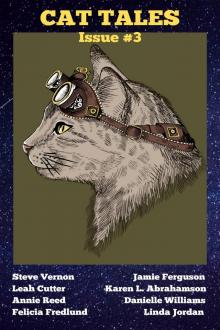 Cat Tales Issue #3
Cat Tales Issue #3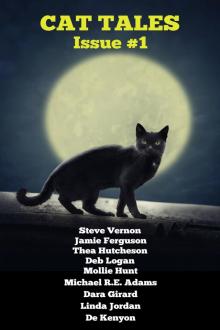 Cat Tales Issue #1
Cat Tales Issue #1 A Fine Sacrifice
A Fine Sacrifice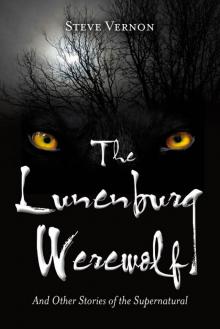 The Lunenburg Werewolf
The Lunenburg Werewolf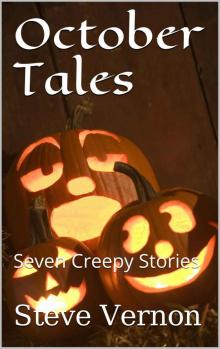 October Tales: Seven Creepy Stories (Stories to SERIOUSLY Creep You Out Book 1)
October Tales: Seven Creepy Stories (Stories to SERIOUSLY Creep You Out Book 1)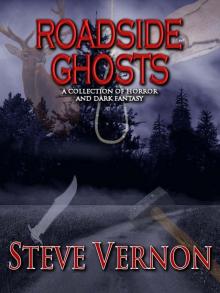 Roadside Ghosts: A Collection of Horror and Dark Fantasy (Stories to SERIOUSLY Creep You Out Book 3)
Roadside Ghosts: A Collection of Horror and Dark Fantasy (Stories to SERIOUSLY Creep You Out Book 3)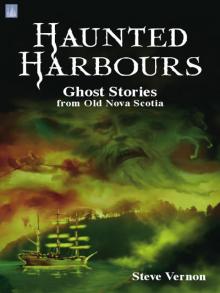 Haunted Harbours
Haunted Harbours Wicked Woods
Wicked Woods Two Fisted Nasty: A Novella and Three Short Stories (Stories to SERIOUSLY Creep You Out Book 2)
Two Fisted Nasty: A Novella and Three Short Stories (Stories to SERIOUSLY Creep You Out Book 2)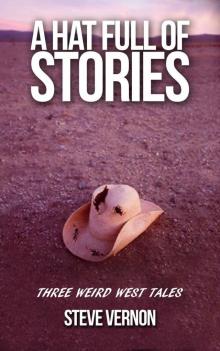 A Hat Full of Stories: Three Weird West Tales (Stories to SERIOUSLY Creep You Out Book 9)
A Hat Full of Stories: Three Weird West Tales (Stories to SERIOUSLY Creep You Out Book 9) Bad Valentines: three twisted love stories (Stories To SERIOUSLY Creep You Out Book 7)
Bad Valentines: three twisted love stories (Stories To SERIOUSLY Creep You Out Book 7) Do-Overs and Detours - Eighteen Eerie Tales (Stories to SERIOUSLY Creep You Out Book 4)
Do-Overs and Detours - Eighteen Eerie Tales (Stories to SERIOUSLY Creep You Out Book 4)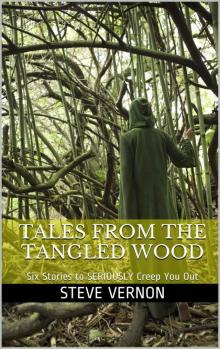 Tales From The Tangled Wood: Six Stories to SERIOUSLY Creep You Out
Tales From The Tangled Wood: Six Stories to SERIOUSLY Creep You Out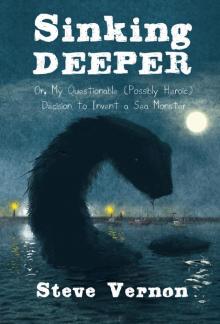 Sinking Deeper
Sinking Deeper Bad Valentines 2: Six Twisted Love Stories (Stories to SERIOUSLY Creep You Out Book 5)
Bad Valentines 2: Six Twisted Love Stories (Stories to SERIOUSLY Creep You Out Book 5)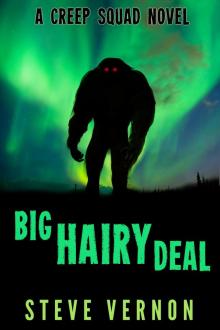 Big Hairy Deal
Big Hairy Deal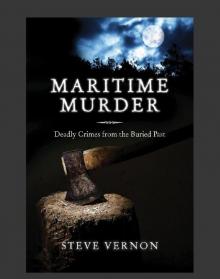 Maritime Murder
Maritime Murder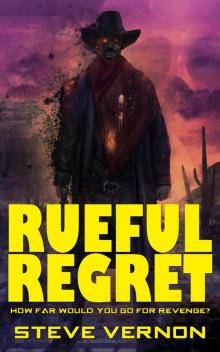 Rueful Regret
Rueful Regret